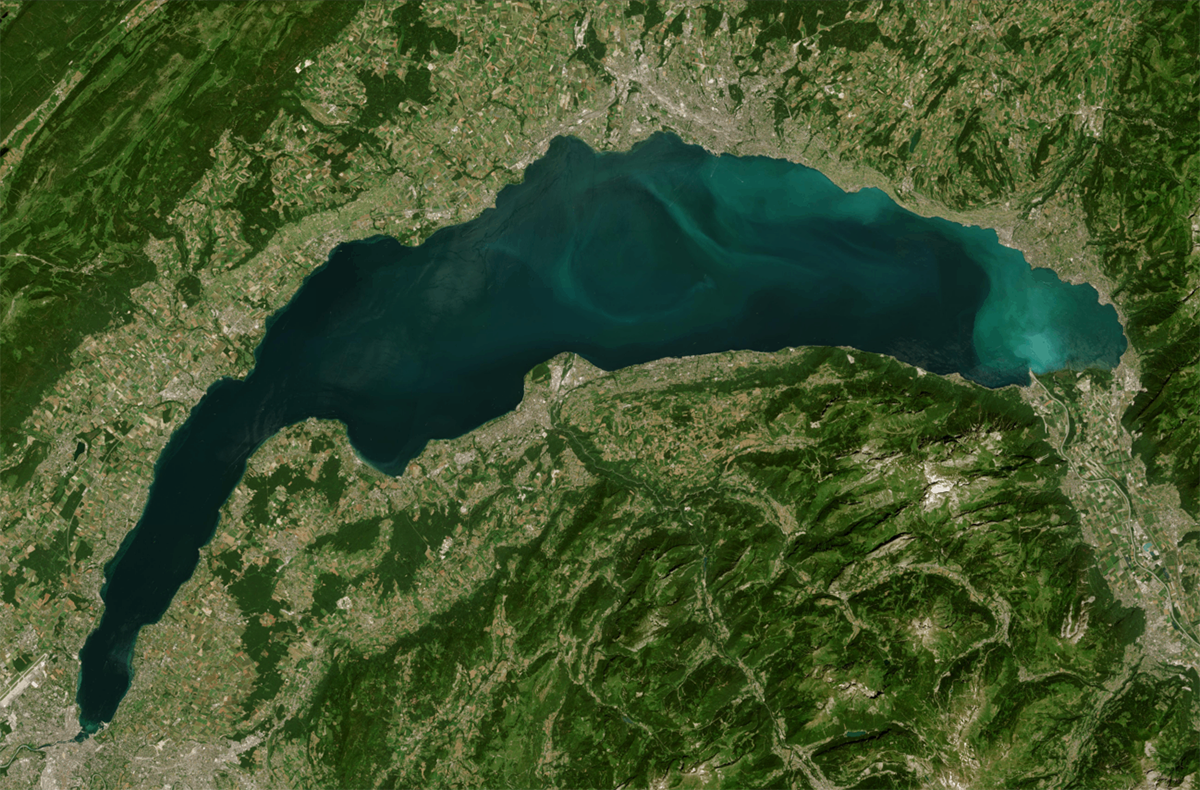Marie-Elodie Perga, Associate Professor of the Institute of Earth Surface Dynamics at the University of Lausanne, discusses SNSF funded Project CARBOGEN, which studies Lake Geneva’s carbon cycle
How much CO2 there is in the atmosphere depends not only on how much we emit but also on how much gets exchanged with the Earth’s surface. Most of the oceans and some soils capture atmospheric CO2, and behave as CO2 sinks. But other Earth’s components release CO2 to the atmosphere, such as continental surface waters. Accurate modelling of the Earth’s carbon cycle requires not only reliable estimates of the strength of those natural carbon sources and sinks, but also whether those fluxes can be expected to change, or even reverse, under different climate or environmental scenarios.
Lake Geneva emits as much CO2 annually as the cars in Lausanne
For instance, Lake Geneva, the largest lake in Western Europe, is a CO2 source to the atmosphere. Roughly, Lake Geneva emits annually as much CO2 as all the cars circulating every year in the second largest city along its shore (Lausanne). We also know that Lake Geneva’s carbon cycle is sensitive to environmental changes. Over the 20th century, the lake has shifted from being neutral (neither a source, nor a sink) to a carbon source due to human activities in its catchment. The greatest puzzle is that, in light of the current knowledge, there would be no reason for the lake to be so much of a CO2 emitter. Usually, lakes supersaturation with CO2 is regarded as the consequence of lakes respiring the organic matter coming from the surrounding land, or because they degas the CO2 directly received from their catchment. But none of these processes fit for Lake Geneva, in which 95% of the lake carbon is under the form of bicarbonates.
One of the most spectacular manifestations of the prominent role of bicarbonates in Lake Geneva’s carbon cycle is the whiting episodes, which can be seen from space. The waters suddenly turn into a milky turquoise hue (see image). This happens when bicarbonate ions precipitate along with calcium to create chalk particles. We expect that bicarbonates are driving the full carbon cycle of the lake, but this is the forgotten half of the carbon cycle. We need to disentangle the full chain of processes tying bicarbonates to the final lake CO2 emissions, and this is what we do as the CARBOGEN Project.

LéXPLORE – a floating laboratory on Lake Geneva
We were fortunate when we began this programme in 2019 because it was the same time that a unique collaborative research infrastructure – a floating laboratory on Lake Geneva called LéXPLORE – was created. It is a 100 square-meters platform with a high-tech lab, and a protected perimeter to set up many different sensors. This structure, which exists only in one place in the world, enables unique measurements, such as how much CO2 gets exchanged every 15 minutes between the lake and the atmosphere every day of the year. Having access to this extremely innovative way of working allows a combination of technical approaches. We have been also working with remote sensing, modelling and very fine biotech analysis, and it is fascinating to use a variety of methods to question this inorganic carbon.
CARBOGEN subprojects provide different perspectives on Lake Geneva’s carbon cycle
CARBOGEN relies on an integrated, process-oriented perspective on Lake Geneva’s carbon cycle, combining field surveys, high-frequency monitoring, bioassays and modelling.
I hired one PhD student and two Postdoctoral researchers to work on the project, funded by the Swiss National Science Foundation (SNSF). The subprojects are extremely effective in allowing each researcher to focus on different questions, so they have their niche and do not step on each other’s feet, but at the same time they cooperate in creating something bigger within the project. Coming from different backgrounds and working together to achieve a shared goal have been very exciting.
We use high-frequency measurements to disentangle the mechanisms underlying the bicarbonate chemistry, producing a quantified knowledge that is further implemented and parametrized in a lake carbon model. We are progressively filling the gap, so that the carbon model is now close to completion. Ultimately, the model will be used to respond to our primary question: Where are those CO2 emissions coming from and why have they changed so much over the last few decades?
We expect CARBOGEN to shed light on this far forgotten half of the carbon cycle and we hope this will be inspiring for other studies elsewhere.
Find out more about the project here, or by contacting: marie-elodie.perga@unil.ch.
This project has received funding from the Swiss National Science Foundation (SNSF) under the Grant Agreement no. 200021_175530.
Please note: This is a commercial profile
© 2019. This work is licensed under CC-BY-NC-ND.











